
(Updated at 1:40 p.m.) A man from Lorton has been sentenced to 22 years in prison after he gave a young woman a Xanax pill laced with fentanyl and tried to hide evidence of her death in a storage shed, court documents show.
Julian A. Velasquez, 36, was sentenced yesterday (Tuesday) following a plea deal in federal court. It came after authorities found he provided the woman with the drugs, sold heroin to a man before calling 911, and lied to emergency responders, according to court documents.
Velasquez also admitted to providing narcotics to two people who died from overdoses, one in 2017 and the other in 2018.
The most recent death happened in 2020, when the woman — a friend of Velasquez from Los Angeles, who’s identified in court documents as E.M. — visited him to take drugs in anticipation of her birthday, according to an FBI affidavit. She died due to fentanyl intoxication.
“She’s no longer with her friends and her family and her community,” Fairfax County Police Department Chief Kevin Davis said of the 29-year-old victim.
FBI assistant special agent in charge Timothy Thibault also expressed his condolences to the victims’ families.
Velasquez picked up the woman from Baltimore’s international airport on Aug. 8, 2020, and he reported to 911 that she was unresponsive the evening of Aug. 9.
Before the 911 call, though, investigators found that Velasquez sold heroin to a male Vienna resident on Aug. 9, according to prosecutors.
“On August 9, 2020, Velasquez found E.M. unresponsive but he did not call 911 or seek medical assistance,” prosecutors said. “Velasquez instead called his friend and drug customer, Enoel Comsti, 27, of Vienna, to assist in removing evidence of drug use and drug distribution from the crime scene at Velasquez’s residence.”
Comsti saw the woman lying on the bed and attempted to administer Narcan to reverse the overdose, according to authorities. Velasquez then tried to clean up the residence and remove evidence of drug use, according to a statement of facts that he signed as part of the plea deal.
The pair then tried to reach a storage unit when Comsti’s vehicle broke down with two flat tires, according to authorities. Velasquez continued by foot to the storage unit to hide drug evidence.
After returning home, Velasquez called 911, asked for an ambulance and made false statements to emergency responders, denying that the woman had a drug overdose.
“Velasquez told the dispatcher that he could not tell if [E.M.] was breathing and indicated that it appeared that [she] was biting her tongue,” the FBI said. “Velasquez told the dispatcher that he believed [the victim] may be diabetic and confirmed to dispatch that it was possible [she] was having a diabetic emergency.”
During the news conference, Davis also described a good Samaritan law meant to protect people if they help get medical aid to an individual who overdoses.
In another plea deal, a federal judge sentenced Comsti in February to a year and nine months in prison for “aiding and abetting tampering with evidence.”
Meanwhile, authorities are currently prosecuting multiple cases caused by fentanyl and other synthetic opioids in northern Virginia, federal prosecutor Jessica Aber said, in an effort to address not just low-level street crimes but international drug traffickers.
Aber said there’s a pill epidemic in the country in which pills are being laced with fentanyl. She said if you go to a party and someone gives you a pill, it could have fentanyl in it and kill you.
“If you are buying drugs on the dark web or other unlicensed licenses, you are potentially playing Russian roulette,” Thibault said. “Drug dealers are lacing virtually every drug with deadly fentanyl.”
A historic landmark in Fairfax County is getting presidential treatment, though it will require visitors and tourists to walk under scaffolding for a while.
The first U.S. president’s Mount Vernon plantation is undergoing a restoration on the eastern side of the mansion.
Exterior work to preserve the home began in late March and could finish this fall. Crews are closely replicating the look that George Washington wanted, where the exterior resembles sand blocks but is actually wood covered in sand and paint.
“It’s essentially the same process that Washington had because he wanted a house that looked like stone, but it’s all wood,” Mount Vernon President and CEO Doug Bradburn said. “The boards would be cut to look like stone blocks.”
Work on the west side, where the main entrance is located, occurred in 2019, and the other sides underwent restoration in 2021.
“This east side is the most complicated,” Bradburn said. “We’ll do the interior later in the year.”
Matt Briney, Mount Vernon’s vice president of media and communications, said the work is funded through ticket sales, retail sales, donations and memberships.
The destination typically draws over 1 million visitors per year, but the COVID-19 pandemic led the site to close for 99 days in early 2020.
Mount Vernon saw 384,000 visits that year, around 450,000 in 2021, and could reach 500,000 or 600,000 this year, Briney said.
The site always sees a three-year recovery from dips over a century’s worth of data, he said.
To help boost the tourism sector, public and private sector partnerships have launched a digital marketing pass for discounts to Mount Vernon and other destinations in southern Fairfax County.
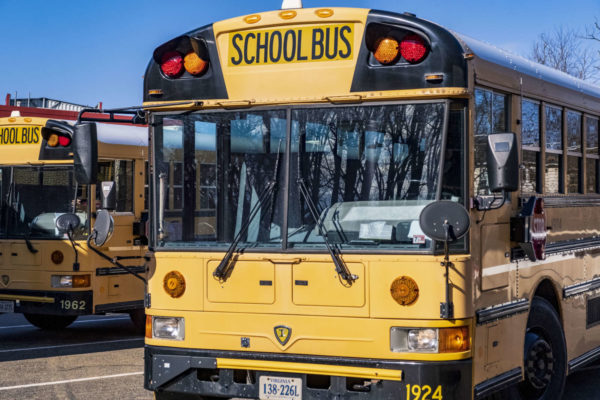
(Updated at 5 p.m.) A former Fairfax County Public Schools bus driver reportedly slapped a student at Fort Belvoir, according to a Fairfax County court affidavit filed on May 4.
An Army investigation for Fort Belvoir stated that there was probable cause to support allegations that the driver assaulted the student on March 16. According to a special agent, photos from a parent showed apparent bruising on the boy’s cheek and under his left eye.
The U.S. Army Criminal Investigation Division declined to provide further details, including whether any charges have been filed. However, it said its investigation was still “active,” as of Tuesday (May 17).
Virginia banned schools from using corporal punishment in 1989, but it wasn’t immediately clear whether FCPS trains staff on the law.
FCPS refused to answer questions about the incident or its policies. It confirmed that the driver is no longer an employee but didn’t provide any further context on why.
The driver provided a statement to FCPS about the incident, but school officials have refused to release it in response to public records requests.
The district initially claimed the statement — identified as a student behavior incident report — was exempt from the Virginia Freedom of Information Act, which has exclusions for personnel records with personally identifiable information and scholastic records involving identifiable individuals.
FFXnow requested that the record be released in redacted form without the driver’s name, stating that Virginia’s law doesn’t allow an agency to withhold a record in its entirety if there’s an exemption.
An FCPS public records officer then said that the federal Family Educational Rights and Privacy Act also prohibits releasing a record linked to “a specific student that would allow a reasonable person in the school community, who does not have personal knowledge of the relevant circumstances, to identify the student with reasonable certainty.”
Megan Rhyne, director of the nonprofit Virginia Coalition for Open Government, said by email that she believes in general that school districts and higher education systems “overuse the FERPA/scholastic records exemption,” stretching beyond the law’s purpose.
“The way so many interpret it is that ANYthing that has to do with a student or shows their image is off-limits,” she wrote. “We know this isn’t true because if it were, there wouldn’t be graduation programs (complete with dean’s list, cum laude distinction, etc., which touch on their academic record), featured students on district websites, Facebook posts of science fair winners, etc.”
She said the mere mention of a student does not turn an entire record into an exempt one.
“I also see a lot of overuse of the personnel exemption to withhold information on anything an employee does,” she wrote. “Again, this goes too far. The employee may have a zone of privacy around her, but that doesn’t extend to her public-facing work.”
Rhyne stressed that public agencies aren’t required to use the exemptions, and some choose an overly broad interpretation to justify keeping valuable information away from the public, even when the law’s policy statement says to interpret exemptions narrowly.
Virginia law allows a court to resolve disputes about whether a record should be released, but the process can unnecessarily waste public resources and newsroom budgets. Some states have an appeal mechanism for a state agency to handle issues, such as Massachusetts and Pennsylvania.
Rhyne said those remain rare, but Virginia would benefit from an administrative appeal system.
The Fairfax Presbyterian Church wants to repurpose 1.6 acres of its parking lot for 10 townhomes for lower-income people.
It’s holding another open house tomorrow (Saturday) at 10 a.m. in its fellowship hall with a question-and-answer session about the proposed project, which requires Fairfax City Council to rezone the area.
The church is seeking to partner with three nonprofits and help house individuals currently making $79,700 or less as well as families of four with an income of $113,850 or less, targeting people in the 40% to 80% range of the area median income.
The church envisions offering a 30-year mortgage, but with land leased at $1 per year, it will remove some $100,000 to $300,000 in land costs that other homeowners might face. Building height and design would be comparable to nearby buildings on the eastern border of the property, according to an application.
The proposed project comes through a partnership with Habitat for Humanity of Northern Virginia, homeless services organization Homestretch and HomeAid Northern Virginia, which is tied to the Northern Virginia Building Industry Association.
“Eight units will be sold with a long-term ground sublease to income eligible Habitat NOVA families and two of the units will be sold to Homestretch for their Sacred Homes Program,” the church’s application says.
However, a representative of a local advocacy group for affordable housing says city staff seem to be catering to a handful of vocal opponents, thereby putting up roadblocks.
Judy Fisher said the city has required two traffic studies so far to understand changes from the pandemic, but then asked for a third traffic study. She said it’s creating hardship for the project, which has relied on pro bono work for the studies.
City spokesman Matthew Kaiser said the project’s application was received May 6, 2022, and is currently under its first round of review.
“There will be only one traffic study,” he wrote in an email.
But Fisher said the church decided to pursue the project five years ago, and the partnership submitted two applications in 2021, receiving staff comments.
“There has been what feels like not very good cooperation from the city,” she said. “It feels like obstruction.”
According to a church flier, it submitted a rezoning application last year in February and resubmitted it Oct. 27.
The flier says the church has committed up to $400,000 with the land to serve families needing affordable housing.
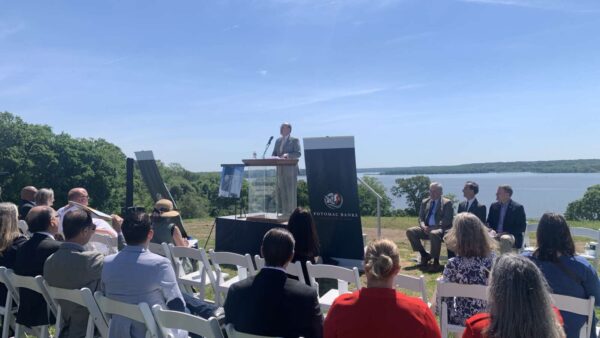
Visit Fairfax is exploring the idea of a tourism improvement district, which could mean an added fee to hotel stays and other amenities.
The tourism organization’s president and CEO, Barry Biggar, said the proposal could go to the Fairfax County Board of Supervisors for a vote this September. The fee would go toward marketing the region, in accordance with a General Assembly law passed last year.
Biggar says southern Fairfax County will be targeted for the district, which would act on its own authority and set fees that could vary for different business types. It would mark a first for the county and could be a model for other areas, he said.
“That money then is collected, accumulated and used purely for the purpose of marketing, promoting the area…which collects the money, but also capital development and capital improvement,” Biggar told FFXnow.
The move could generate an estimated $1 million per year from hotels and restaurants, Biggar said.
It comes amid a county effort to revitalize and rebrand the Route 1 corridor. So far, that push has brought promises of bus rapid transit and a “Potomac Banks: Explore Fairfax South” tourism campaign with a discount pass for historic sites, partnering businesses and more.
“Only the hotels here in the area would be included, so that wouldn’t be added to a Tysons hotel,” Biggar said of the possible fee. “For a hotel, they may go, ‘We’ll do a dollar a room per night.’ For a restaurant, they may go…a half a percent of the total bill. For an attraction, you know, maybe 50 cents per admission.”
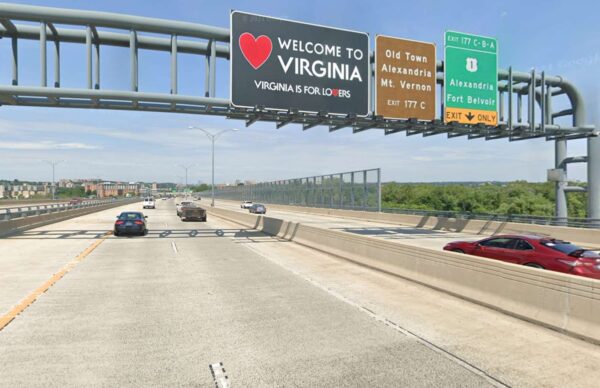
Work to expand the I-495 Express Lanes to the north is only just warming up, but the Virginia Department of Transportation is now turning its attention to the southern end of the Capital Beltway.
The I-495 Southside Express Lanes environmental study is evaluating possible express lane additions on an 11-mile stretch of the corridor east of the I-395 interchange in Springfield to Maryland Route 210 in Prince George’s County.
Crossing over the Potomac River, the corridor currently has two to five lanes typically, though a divided highway splits local and pass-thru routes. There is also a portion with six lanes, but the corridor overall has no express lanes presently.
VDOT presented its proposal at a virtual meeting yesterday (Wednesday), kicking off a series of meetings during a public comment period that’s slated to end June 6.
In-person meetings will take place tonight in Maryland, Monday (May 23) at John R. Lewis High School in Springfield, and the Nannie J. Lee Memorial Recreation Center in Alexandria on May 25.
The study is seeking to reduce congestion, address safety concerns and provide other improvements.
“In the morning, there is significant congestion going in the westbound direction, or from Maryland towards Virginia,” Abi Lerner, a VDOT engineer for megaprojects, said during the virtual meeting.
According to VDOT’s weekday data for the interstate, there’s approximately two hours of congestion in the morning from around 6:30 to 9, Lerner said. In 2019, average travel speeds could be as low as 30 mph during peak commuting times.
In Virginia, there’s significant congestion for an even longer time frame from approximately 3 to 7 p.m. for traffic going eastbound to the Woodrow Wilson Memorial Bridge.
Expressing several concerns, resident Poul Hertel asked for the public comment deadline to be extended to June 18. VDOT said that would be considered and updated, if possible, on its project page.
The study is also evaluating whether express lane exit and entry connections could be added, an idea that drew mixed reactions.
“It’s very distressing to see that you have exit points into Old Town Alexandria,” Hertel said. “I would strongly urge you to remove that from your list.”
Meanwhile, multiple Maryland residents weighed in, with Prince George’s County Councilmember Jolene Ivey noting the area’s opposition to toll lanes there.
Lerner responded that whatever VDOT ultimately recommends “is going to require buy-in…from the Maryland side” of the Beltway.
Oxon Hill resident Howard Herrnstadt said it seems that a small number of affluent and time-stressed motorists use existing express lanes, questioning how the infrastructure expense would be justified.
Lerner said VDOT has seen significant usage of the express lanes for carpooling, which enables drivers to use them for free, but he was unable to provide data. Herrnstadt challenged that narrative.
According to VDOT, the proposed changes wouldn’t interfere with the possibility of light rail in the future, which the Woodrow Wilson bridge was designed to accommodate.
The study will inform any recommendations, including no changes, or potential projects in the future. VDOT plans to present options this fall or winter and finish its review in the fall of 2023 or winter of 2024.
Photo via Google Maps
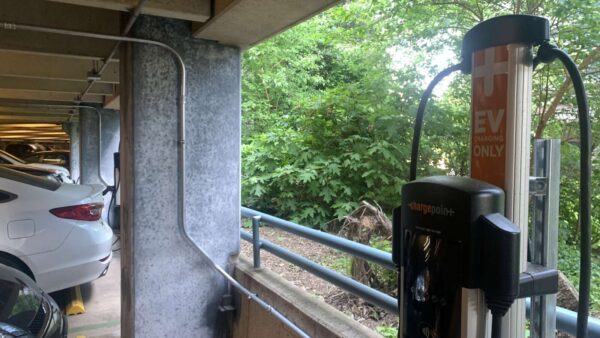
Fairfax County hopes to rely entirely on electric and non-carbon-emitting vehicles by 2035, but projected costs could become an obstacle.
While the county government already has electric vehicle charging stations across several parking garages, future installations could require double or triple the current estimated cost of $75,000 per site, Kambiz Agazi, the director of the county’s Office of Environmental and Energy Coordination, reported on Tuesday (May 17).
“Cost estimates have been upended by the pandemic-related market disruptions” to construction, he told the Board of Supervisors during its environmental committee meeting, adding that staff are tracking Bipartisan Infrastructure Law grant possibilities.
According to the staff presentation, county sites slated to get electric vehicles or new charging stations within the next year include the Public Safety Headquarters, a maintenance facility on Jermantown Road, and the Herndon-Monroe parking garage.
County staff are also evaluating police stations for a pilot project that could start at two stations.
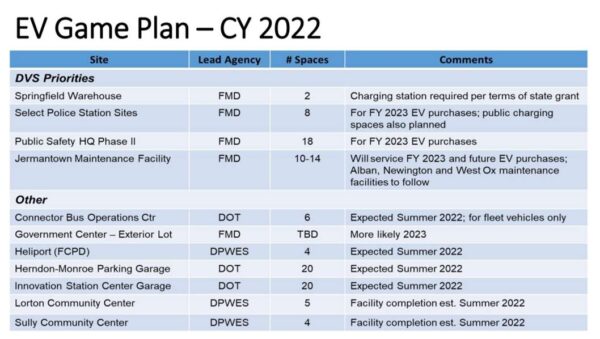
Meanwhile, the county is finally starting to see some progress on the dozens of solar energy projects it has in the works.
Solar panels could be added to the Sully Community Center this summer. A third party could also install panels on the Lorton Community Center, but a lease wasn’t finalized at the time of the presentation.
In addition, the county is spending nearly $3.9 million on projects to improve energy efficiency at the Cub Run and South Run RECenters as well as the Fairfax City Library. Upgrades include lighting, electricity, and heating, ventilation and air conditioning systems.
Construction is currently underway on those three projects and is expected to finish this year. The changes will reduce the facilities’ annual costs by $153,000 per year and reduce their carbon dioxide equivalent by approximately 1,245 tons, according to the county.
That translates to removing nearly 271 vehicles from the road per year.
Just in time for the summer tourist season, Fairfax County is stepping up its efforts to promote the amenities in its southeastern area, providing a discount pass for admissions and more.
County and tourism officials, along with staff of George Washington’s Mount Vernon, touted a new digital pass yesterday (Wednesday) that gives visitors at historic sites and other destinations 20% off admissions and other deals.
Launched last December, the branding campaign is called “Potomac Banks: Explore Fairfax South” and was developed by the digital marketing agency Streetsense. It was showcased during a media event outside the first president’s mansion overlooking the Potomac River.
“Fairfax South is the place to be,” said Mount Vernon District Supervisor Dan Storck, who started the Mount Vernon Tourism Task Force in 2019 that led to the branding.
Storck, who was a President Abe Lincoln re-enactor for 25 years, said his love of history was a driving force in showcasing the region’s amenities.
An original marketing push rolled out in February 2020, but the COVID-19 pandemic soon took hold in the U.S., particularly damaging the hotel and restaurant industries, Storck said.
The effort also includes one year of marketing with a business development campaign, said Barry Biggar, president and CEO of Visit Fairfax, the area’s official tourism organization.
“Now the real work begins,” he said.
Savings pass launched to promote region
The pandemic-induced delay meant the marketing effort could include a new feature: the Potomac Banks Savings Pass, a $46 pass that gives discounted admission to partnering sites, including George Washington’s Mount Vernon, George Mason’s Gunston Hall and Woodlawn & Pope-Leighey House.
The pass, which has a $25 version for kids ages 6 through 11, also provides deals on tours, gifts and activities at sites such as the National Museum of the U.S. Army, the Workhouse Arts Center, G34.3 Brewing Co., Woodlawn Press Winery and Historic Huntley.
The pass is valid for 90 days, but once it’s first redeemed at a site, it lasts for seven days.
While Washington’s historic property has weathered the pandemic and had buses of visitors there yesterday, other sites will be able to cross-promote.
What do @mountvernon, @gunstonhall, and @woodlawnpopel have in common?
We are offering 20% off admission through the #PotomacBanks Savings Pass! See what other discounts are included: https://t.co/UXJ2vwy3j1
#VisitFairfax #VisitVirginia pic.twitter.com/d4NKBboimc
— Mount Vernon (@MountVernon) May 18, 2022
Fairfax County Board of Supervisors Chairman Jeff McKay said teachers and textbooks are amazing, but nothing can replace experiencing history in person, and there are historic assets right in people’s backyards to enjoy that people from across the world come to visit.
Biggar said there are plans to create the county’s first tourism improvement district in southern Fairfax County. He said it could be a model for the rest of the region.
According to Biggar, Fairfax County’s tourism dollars generate the most revenue for the Commonwealth of any jurisdiction. The county’s tourism industry generated more than $3 billion in 2019, and he projects it will reach $4.5 billion in five years.
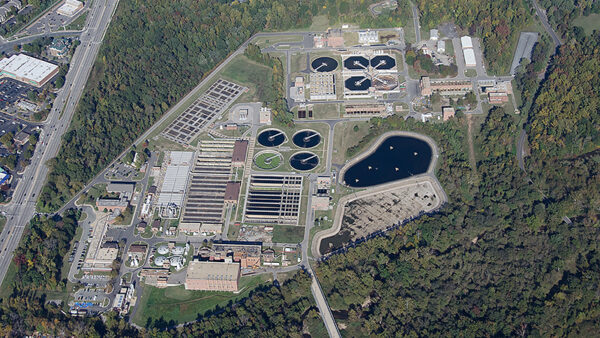
The Fairfax County Board of Supervisors is examining whether developers should continue to bear new infrastructure costs or split the costs among current residents and other property owners.
Sewer fees will already increase starting July 1, when sewer service charges per 1,000 gallons will increase from $7.72 to $8.09.
A proposed sewer reimbursement policy would up that rate by 4.5 cents on average annually, among other increases, by charging current users to cover maintenance and improvements as the system expands with new development.
Even without the changes, the county’s sewer service rate is slated to reach $9.67 over the following four fiscal years to help fund the sewer infrastructure.
Multiple supervisors expressed support for the proposal during a land use policy committee meeting yesterday (Tuesday). Chairman Jeff McKay called it a creative solution.
Currently, if a developer wants to build, they must upgrade sewer infrastructure to accommodate the project if necessary, which is known as a “growth-pays-for-growth policy.” There’s an option to reclaim some of those costs if other development contributes.
Before the pandemic, developers paid anywhere between $16.3 million and $42.5 million annually to install sewer infrastructure, according to county estimates.
The matter comes as the county faces significant affordable housing needs, and developers seek to minimize costs to aid further growth.
The current system’s gradual reimbursements and lack of a guarantee for future reimbursement have seemed to be unattractive to developers, according to a Feb. 8 memo from county executive Bryan Hill.
Mason District Supervisor Penny Gross and Springfield District Supervisor Pat Herrity had raised concerns in October, saying that larger projects can spread out costs across multiple buildings or developments, but developer fees can be burdensome for smaller projects where the capacity would be breached.
Between 2016 and 2021, over 90% of developer-led projects didn’t have to upsize existing sewers, based on a county Public Works and Environmental Services estimate, because the current system had adequate capacity.
When sewer capacity is sufficient, developers don’t have to do anything further.
The county board could also change when developers get paid, potentially accelerating projects.

Fairfax County is examining its signage rules to possibly allow bigger and brighter electronic signs.
Staff discussed the matter yesterday (Tuesday) during a Board of Supervisors’ land use policy committee meeting.
Dranesville District Supervisor John Foust questioned the goal of the review, which has been underway since March 2019, according to a staff report.
Staff told him the county’s existing ordinance is old and shopping centers want to be competitive. Casey Judge, with the county’s Zoning Administration Division, suggested that easing an application process could help businesses too.
The county has proposed simplifying and consolidating three application processes into one for nonresidential areas.
“We have an awful lot of sign pollution already,” Mason District Supervisor Penny Gross said. “I’m really concerned about some of this.”
She noted that even signs within buildings, such as lighted “open” signage, can distract drivers and other road users.
Businesses are also already allowed to install electronic signs in residential areas, according to the county.
Hunter Mill District Supervisor Walter Alcorn, the committee’s vice chair, said his office has received complaints about existing electronic signs in residential neighborhoods.
Alcorn said he’s not as concerned if a sign is in the middle of a commercial district, but he wants to find out more about how to manage issues near or adjacent to neighborhoods.
The committee’s chair, Sully District Supervisor Kathy Smith, directed staff to return with further recommendations for the board to consider.
A draft of changes could be developed this summer or fall. Public hearings are tentatively expected this winter or in early 2023 on any modifications to the county’s rules.
Photo via Google Maps

